Dive beneath the watery depths of Donkey Kong Bananza’s Lagoon Layer, where elusive fossils await cunning explorers-if you know where to dig, you may just uncover relics as rare as a prehistoric whale skull and claim treasures essential for unlocking the rarest outfits for DK and Pauline.
The Lagoon Layer is home to three types of fossils: ammonite, anomalocaris, and a huge whale fossil. These are all water-based fossils, which makes sense, given the Lagoon Layer is, well, a lagoon.
Below, we list where to find the rarer fossils in the Lagoon Layer we’ve found so far. Note that we’re not listing where to find common fossils, like ammonite. There’s simply too many of them to list, but we will help you find the larger, rarer fossils. We’re still updating this guide with more fossils as we find them.
Anomalocaris fossil locations
In Donkey Kong Bananza, the Anomalocaris fossils can be found exclusively within the Lagoon Layer. There are a total of ten Anomalocaris fossils scattered throughout this area, each located in unique and sometimes hidden spots such as cliff sides, caves, and behind obstacles like walls or containers. Finding these fossils often requires exploring flooded caves, breaking clay walls, and using abilities like the Charge Punch or throwing explosive chunks to reveal them. These fossils are rarer than the more common ammonite fossils and are essential for unlocking special outfits and upgrades in the game.
There are ten Anomalocaris fossils found in the Lagoon Layer. The fossils themselves aren’t numbered in Donkey Kong Bananza, but we’ve numbered and organized the fossils in a way that you can naturally follow as you progress through the Lagoon Layer.
Anomalocaris #1 (Sublayer 100)
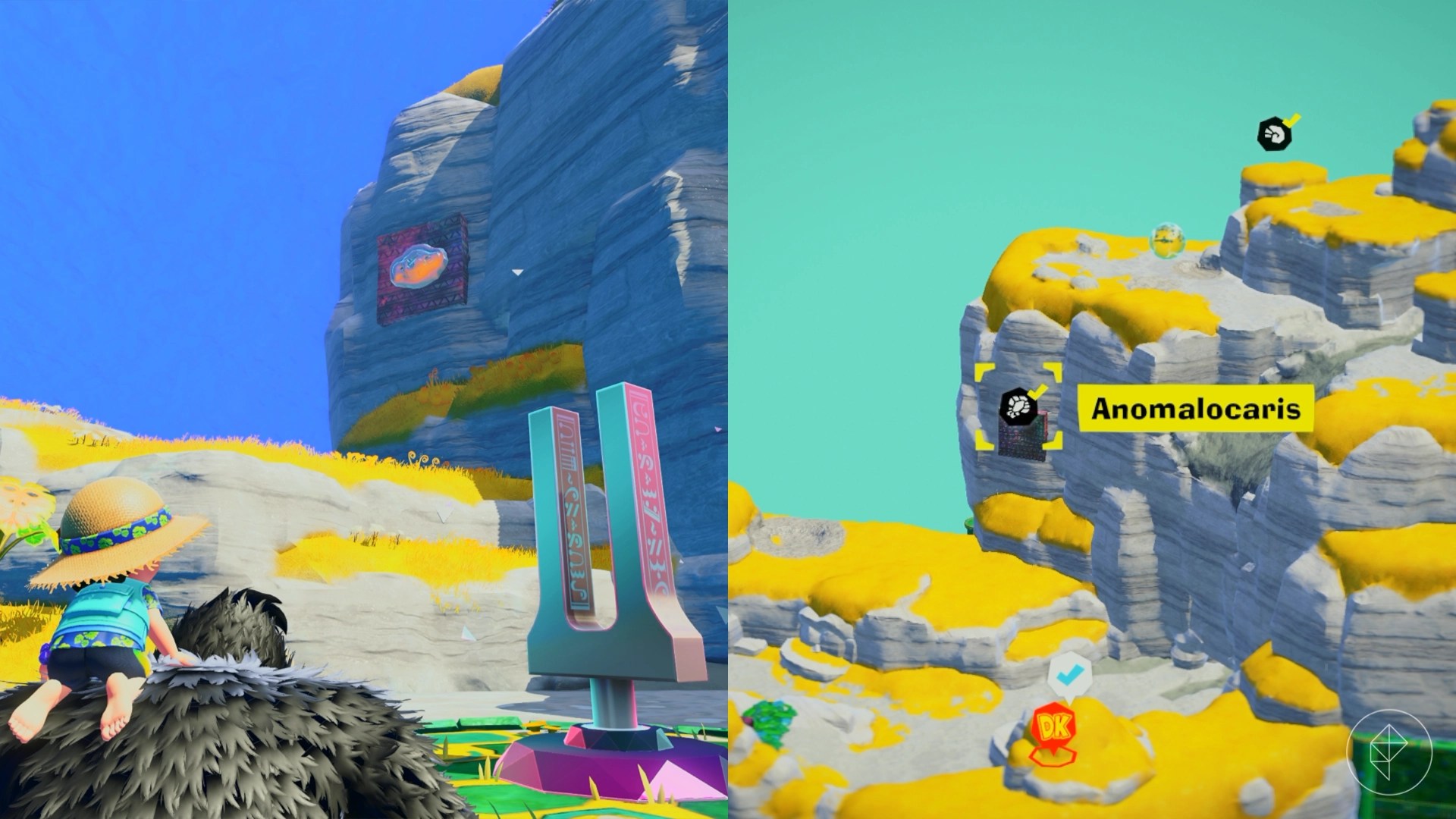
The first anomalocaris fossil is found on a wall behind the Reservoir Bank tuning fork. Look up at the wall to find the fossil on a concrete wall. Luckily, there is a boom rock just down the path that you can chuck at the wall to collect it.
Anomalocaris #2 (Sublayer 100)
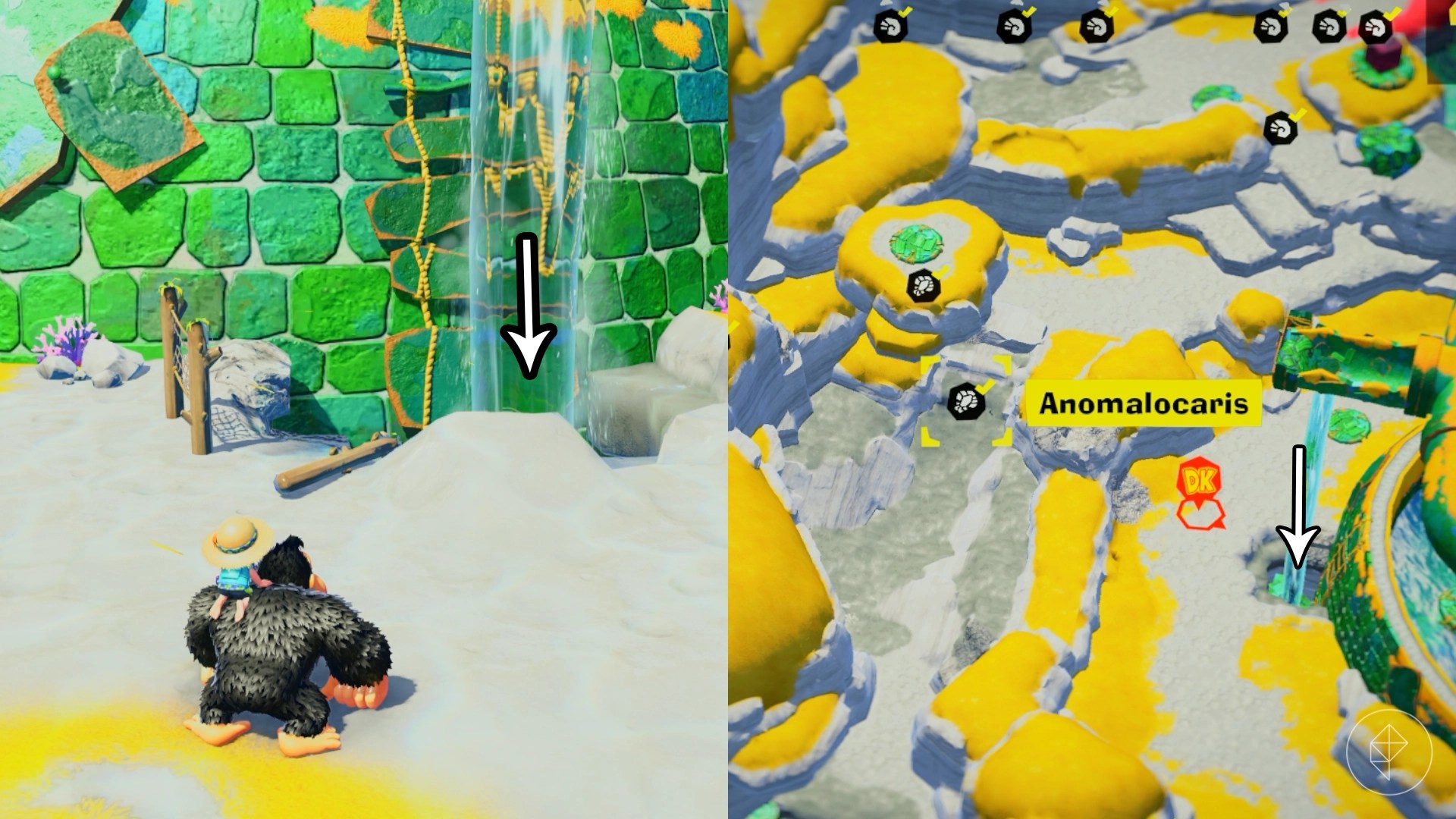
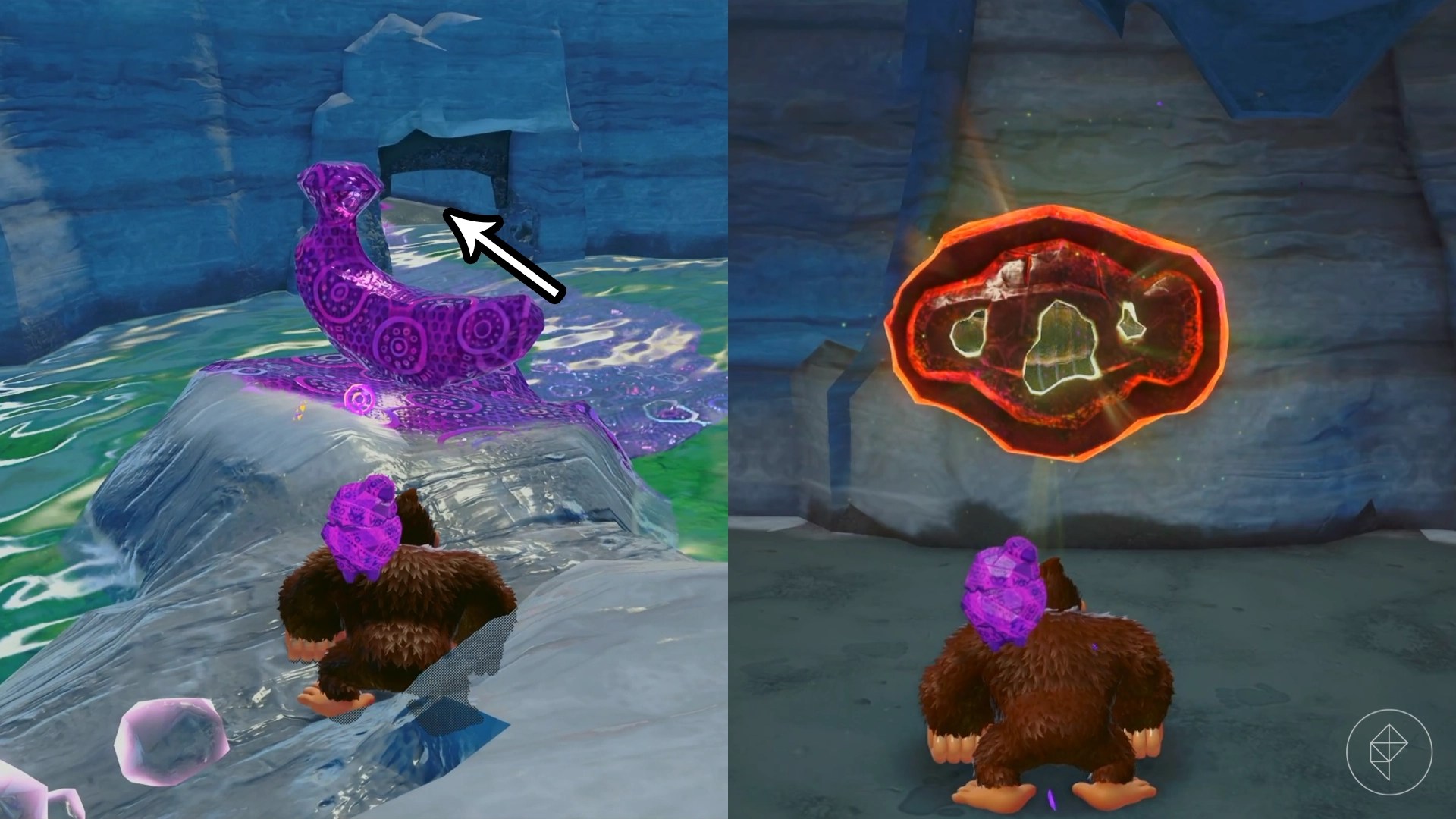
Head underneath the large pipe structure to find a voided Banandium Gem. Follow the void trail through the walls until you find the sealed object. Destroy the object to remove the void, and turn around to find the fossil on the wall.
Anomalocaris #3 (Sublayer 100)
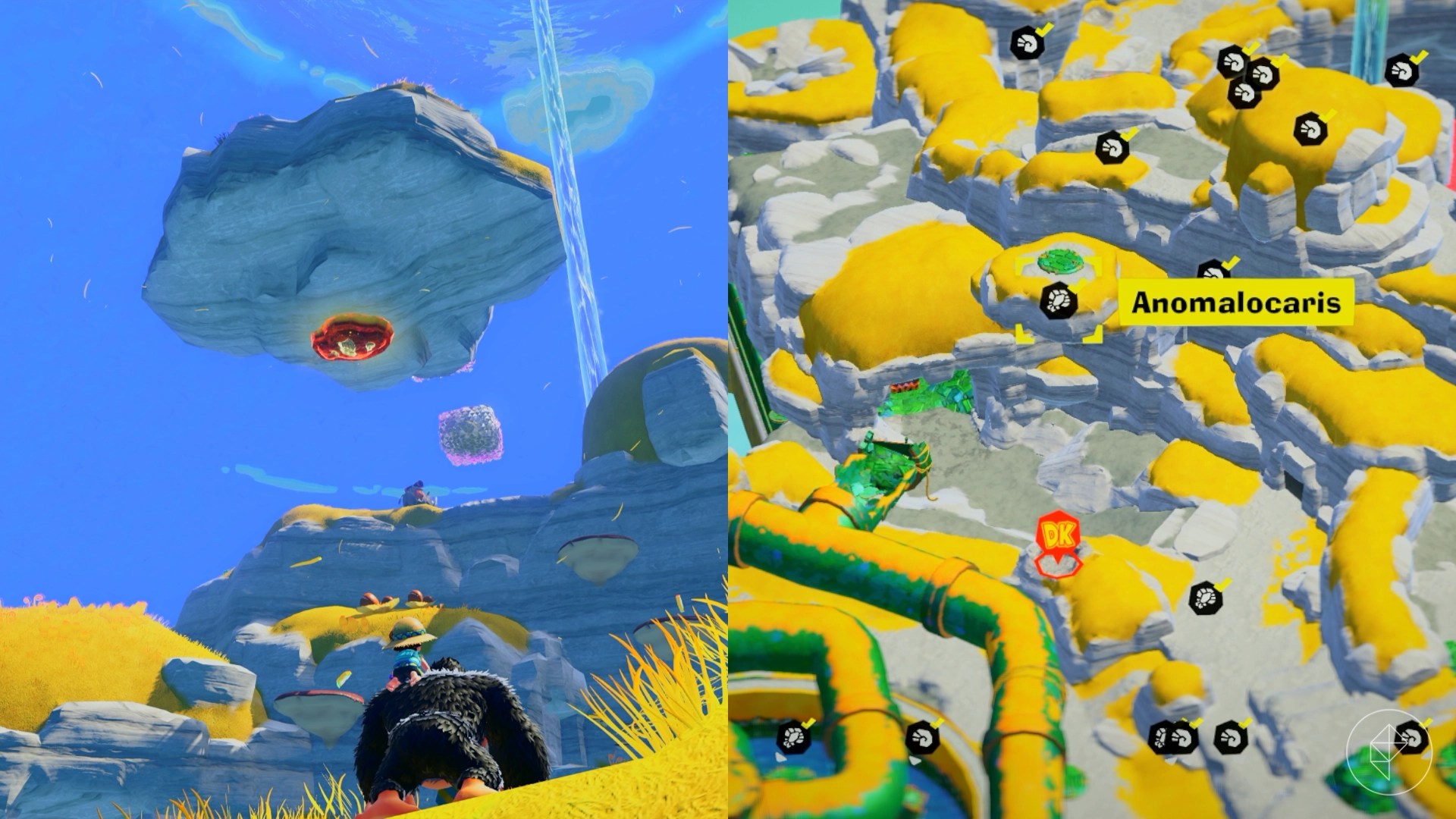
If you stand underneath Cranky Kong’s floating island and look up, you’ll find another anomalocaris fossil. Throw a few chunks at the fossil until it breaks to collect it.
Anomalocaris #4 (Sublayer 100)
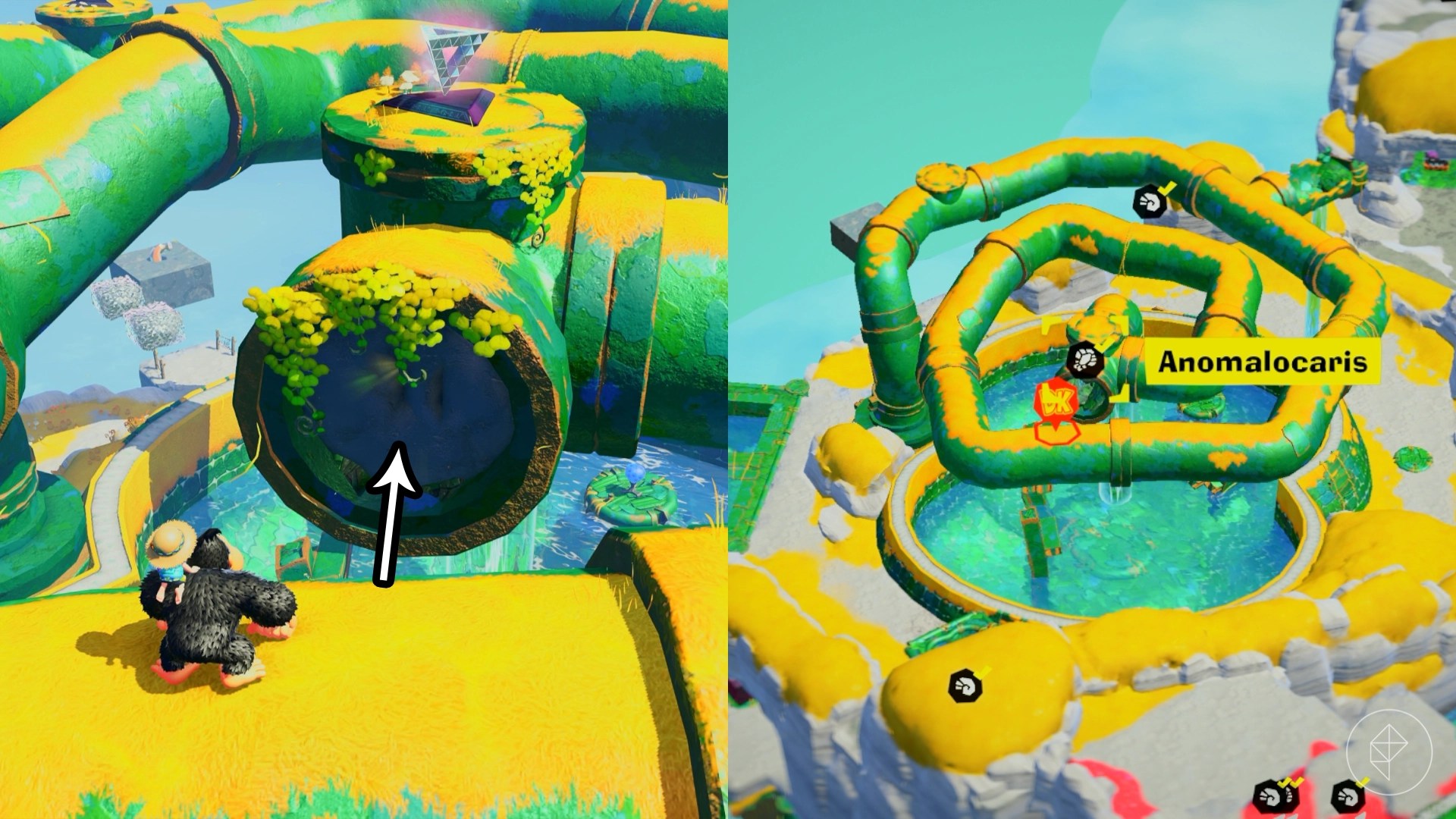
Climb to the top of the giant pipe structure, but don’t go all the way to the center of the swirl. On the side of the middle pipe, you’ll spot a stone wall. Break the wall to find the fossil inside.
If you’re having a hard time breaking the wall, we recommend rolling at it to break the wall and collect the fossil in one go.
Anomalocaris #5 (Sublayer 100)
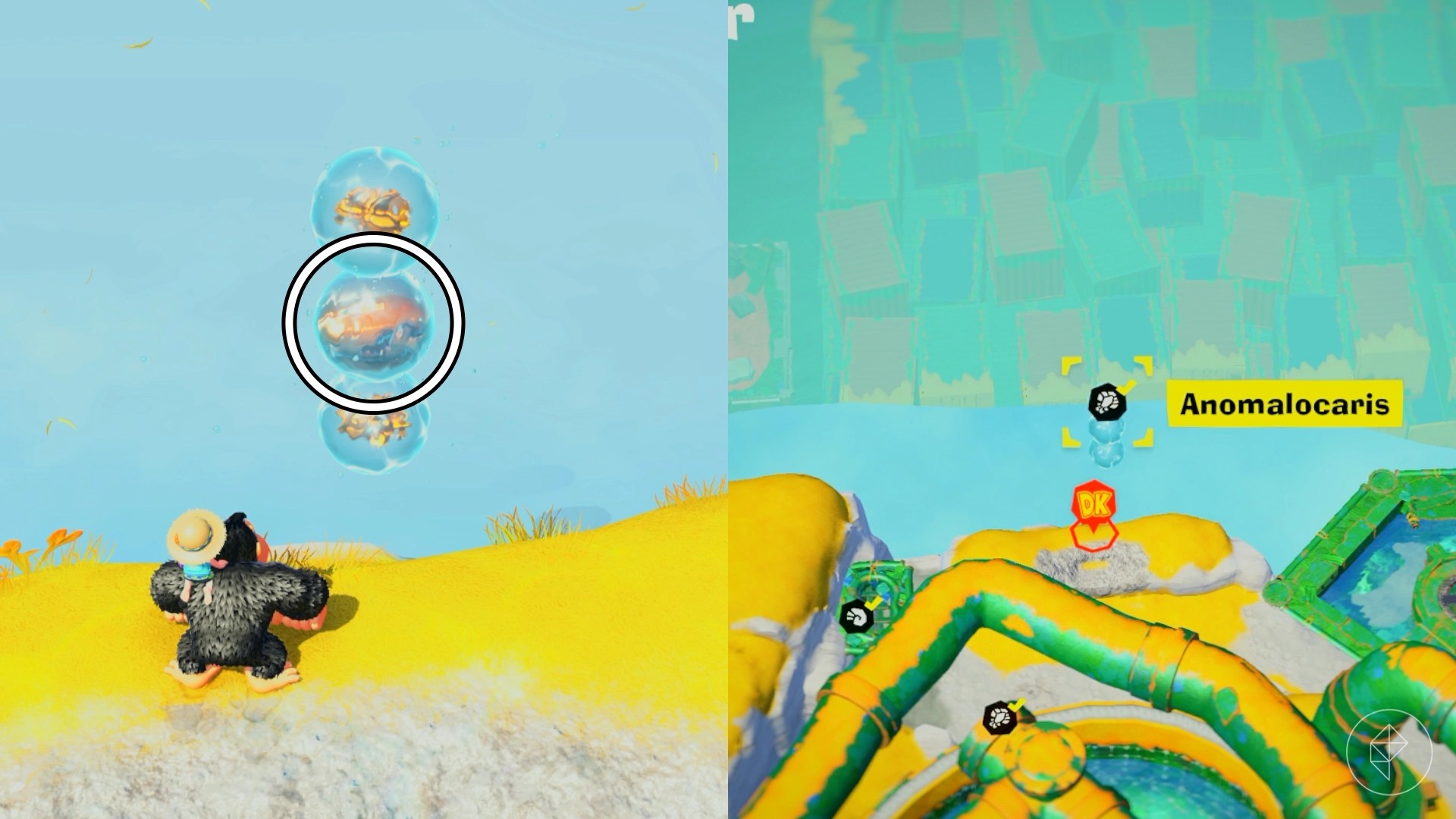
Along the edge behind the giant pipe structure in Sublayer 100, you’ll find three floating bubbles. Grab a chunk and throw it at the bubble in the middle to collect the fossil.
Anomalocaris #6 (Sublayer 100)
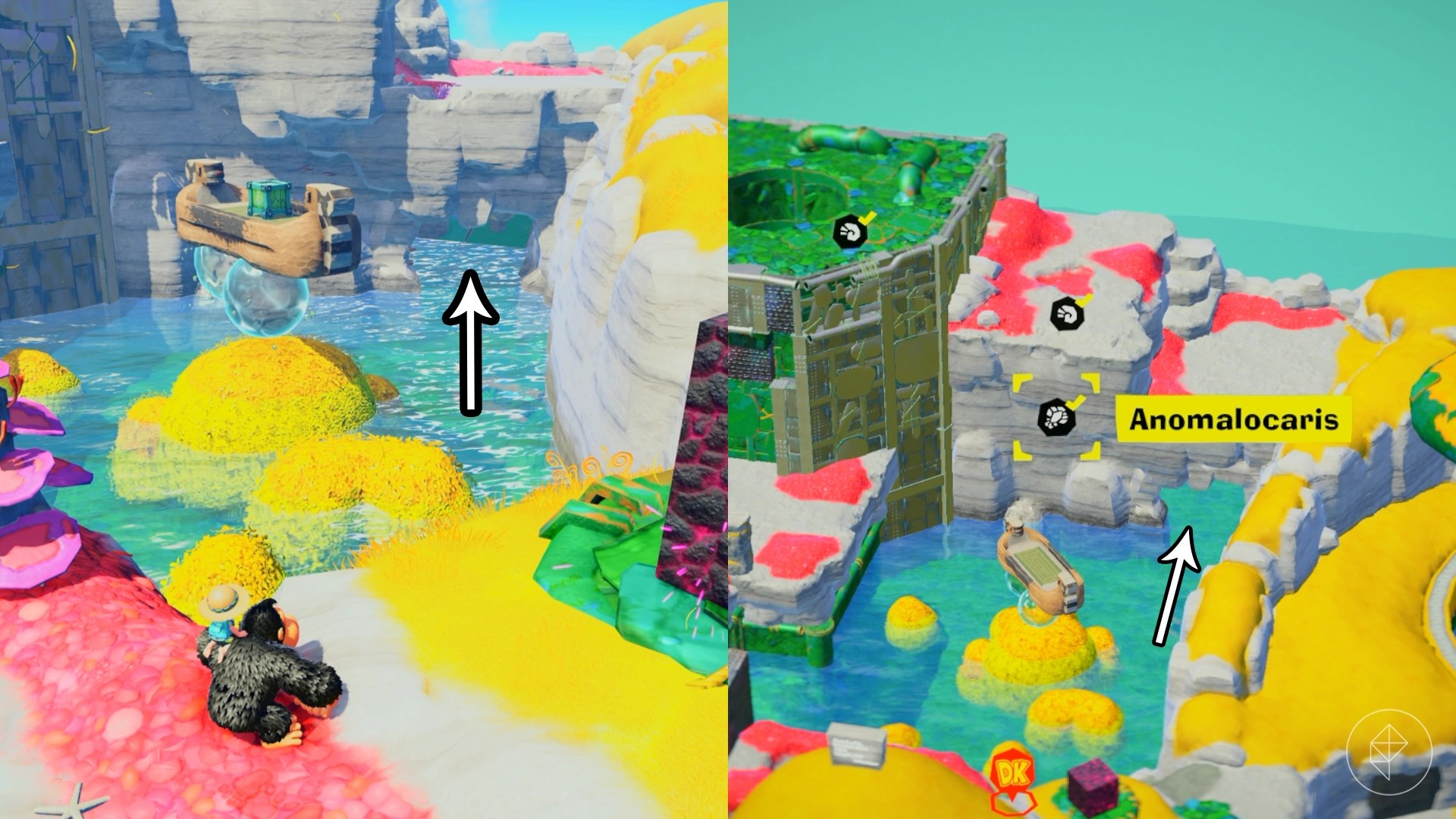
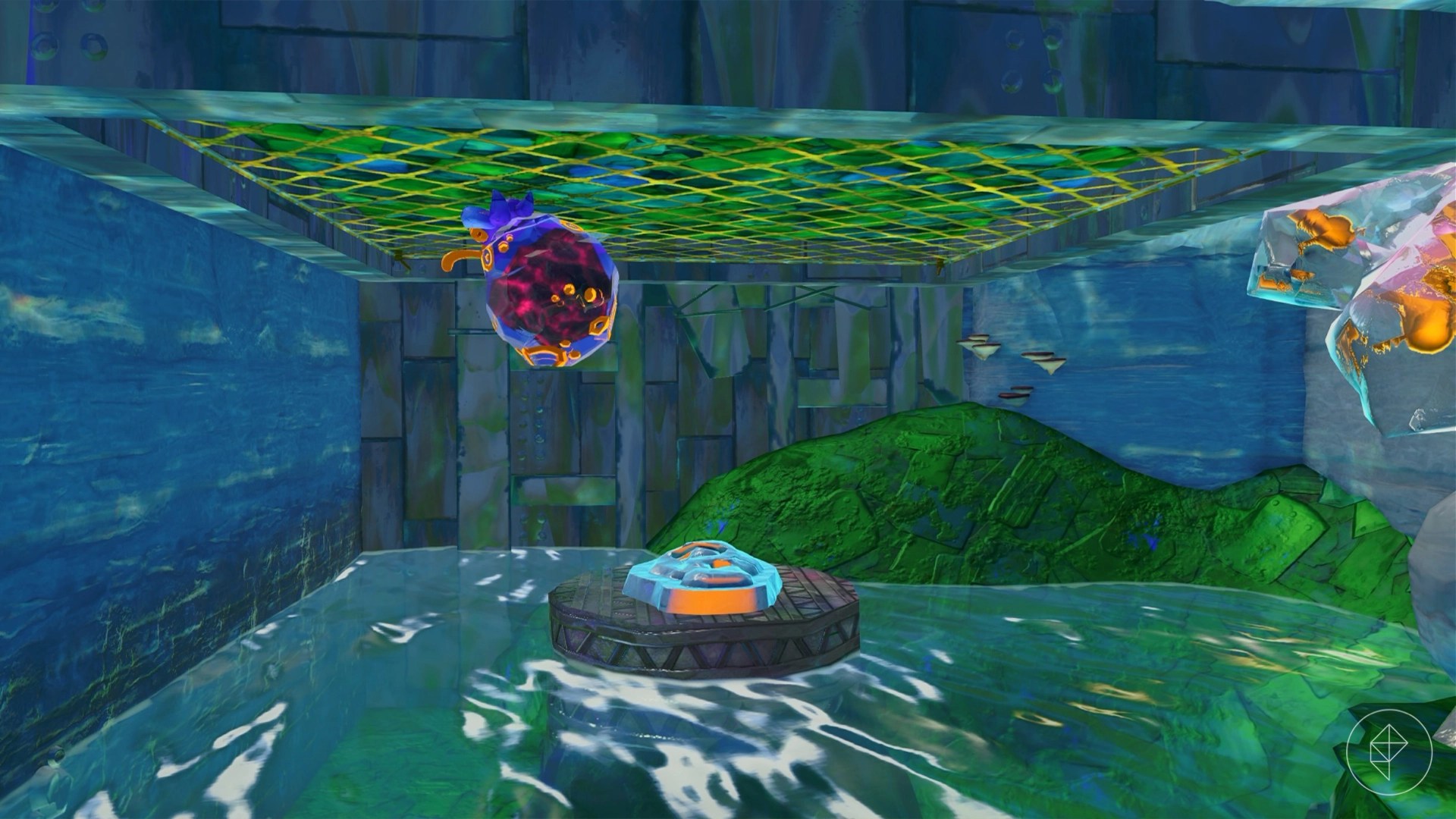
Just before you cross the bridge in Sublayer 100, drop into the water and swim towards the cave opening in the distance. Inside, you’ll find an anomalocaris fossil with an antickoid crawling above it. Hit the antickoid to drop its boom rock onto the fossil to collect it.
Anomalocaris #7 (Sublayer 101)
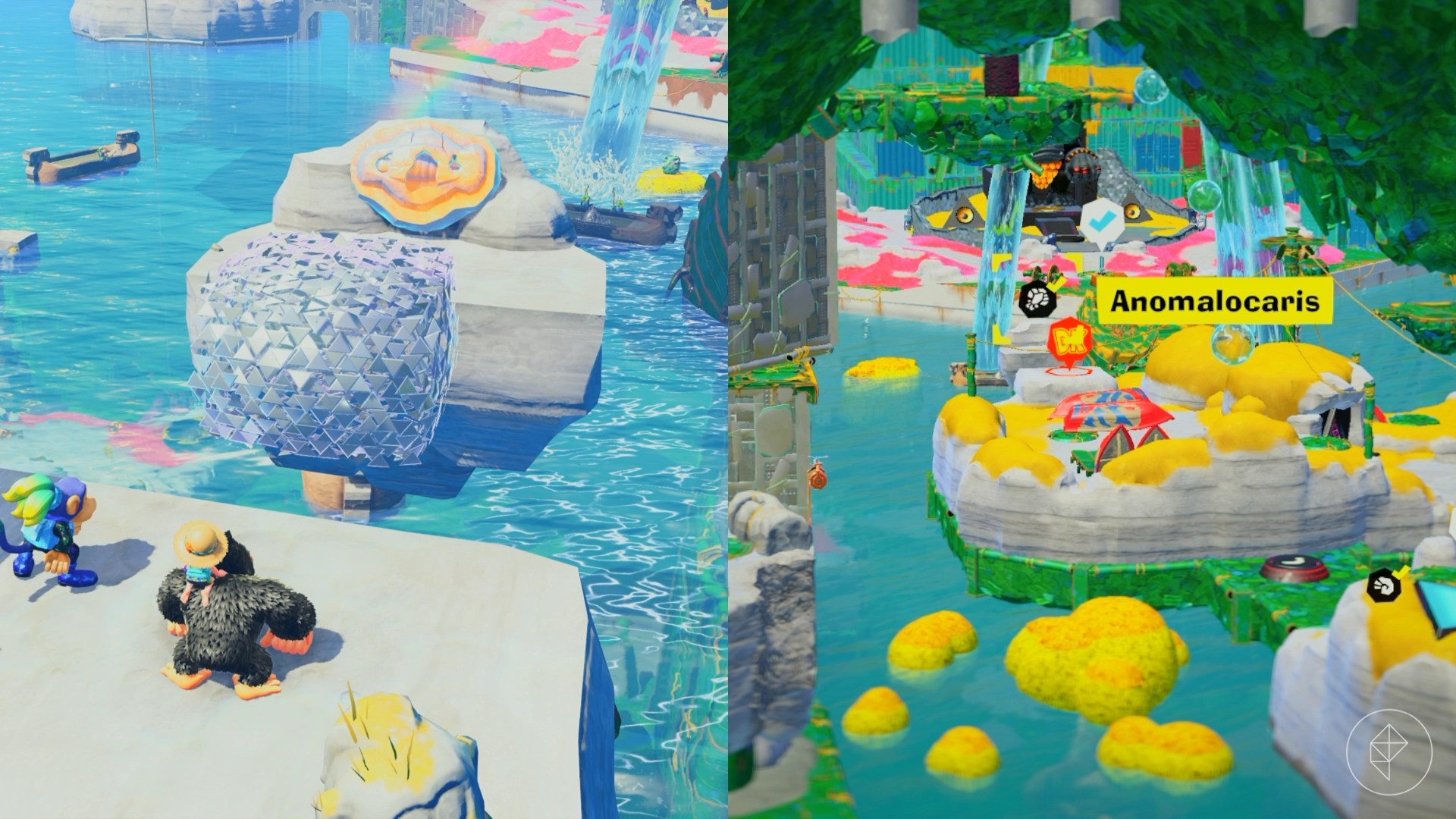
Head towards the Teeleporter in the village and turn to the right to find this anomalocaris fossil. Throw a chunk at the shifty block to create a platform and hop across to collect it.
Anomalocaris #8 (Sublayer 101)
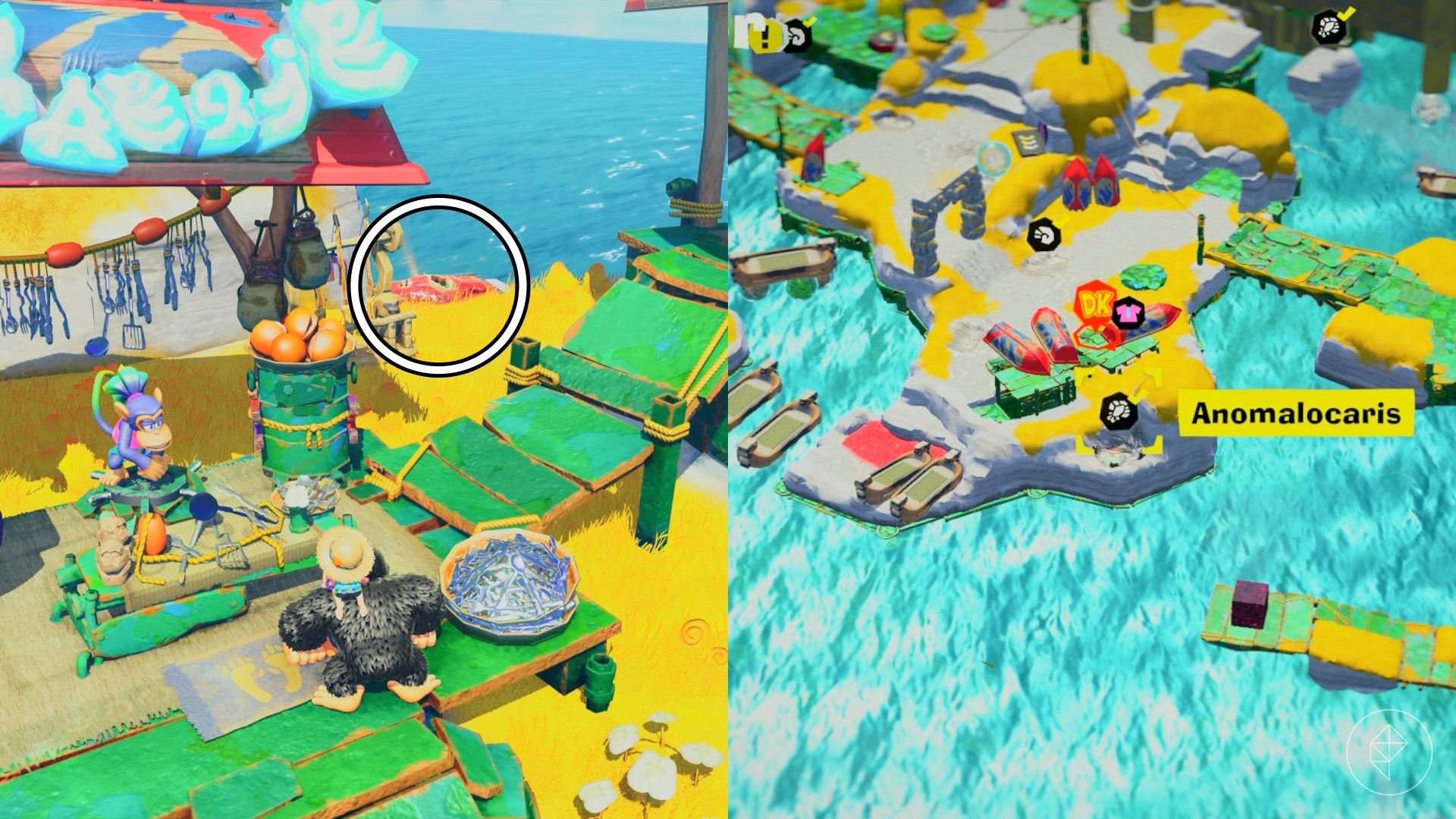
This fossil is stuck in a concrete block behind the Style Shop in Sublayer 101. You’ll either need to use your Kong Bananza powers or throw a boom rock across the water to collect it.
Anomalocaris #9 (Sublayer 101)
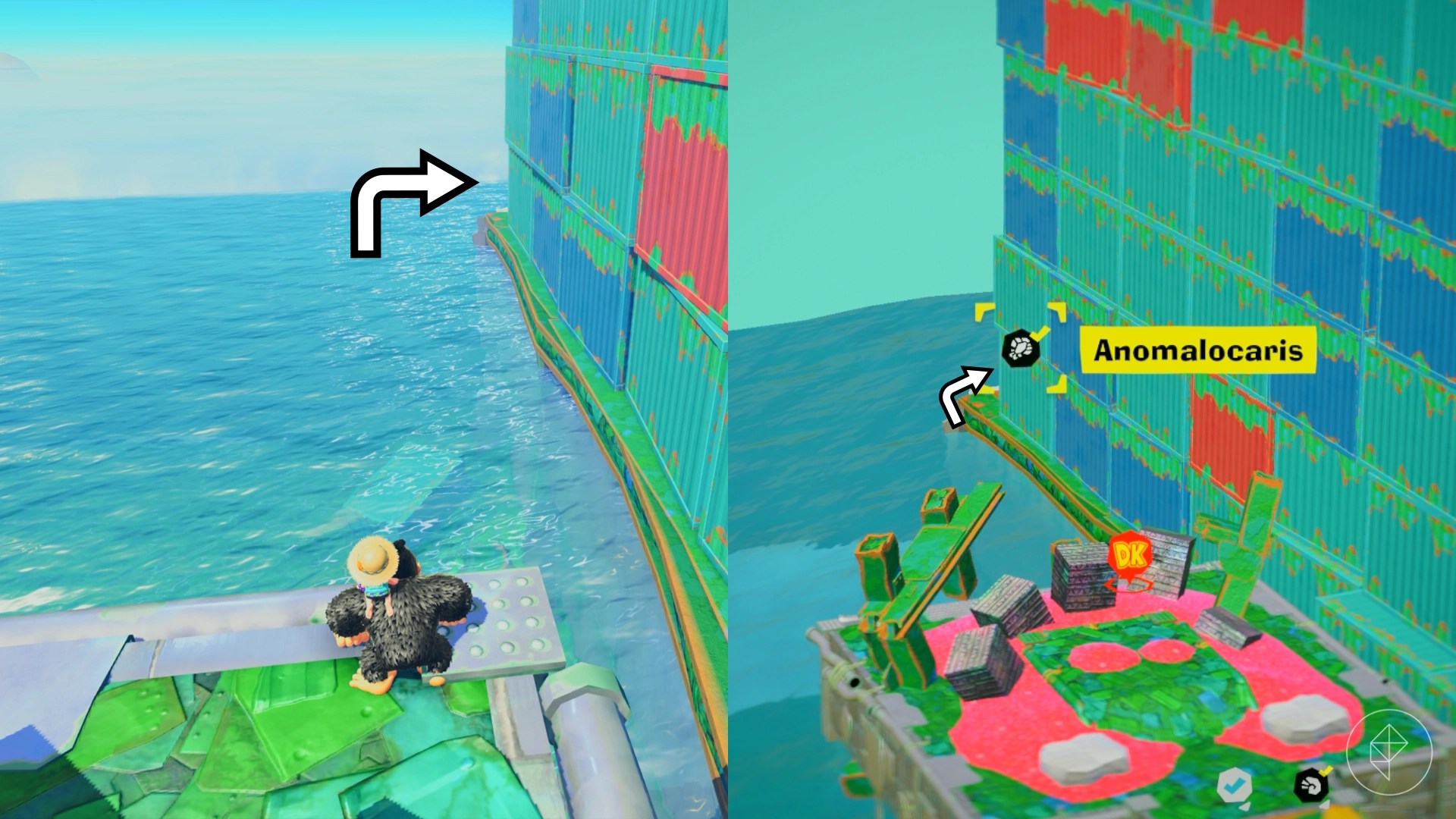
The last anomalocaris fossil in Sublayer 101 is located behind the shipping containers behind Elder Kong. Make your way around the containers either by swimming or walking along the edge to find the fossil around the corner.
Anomalocaris #10 (Sublayer 102)
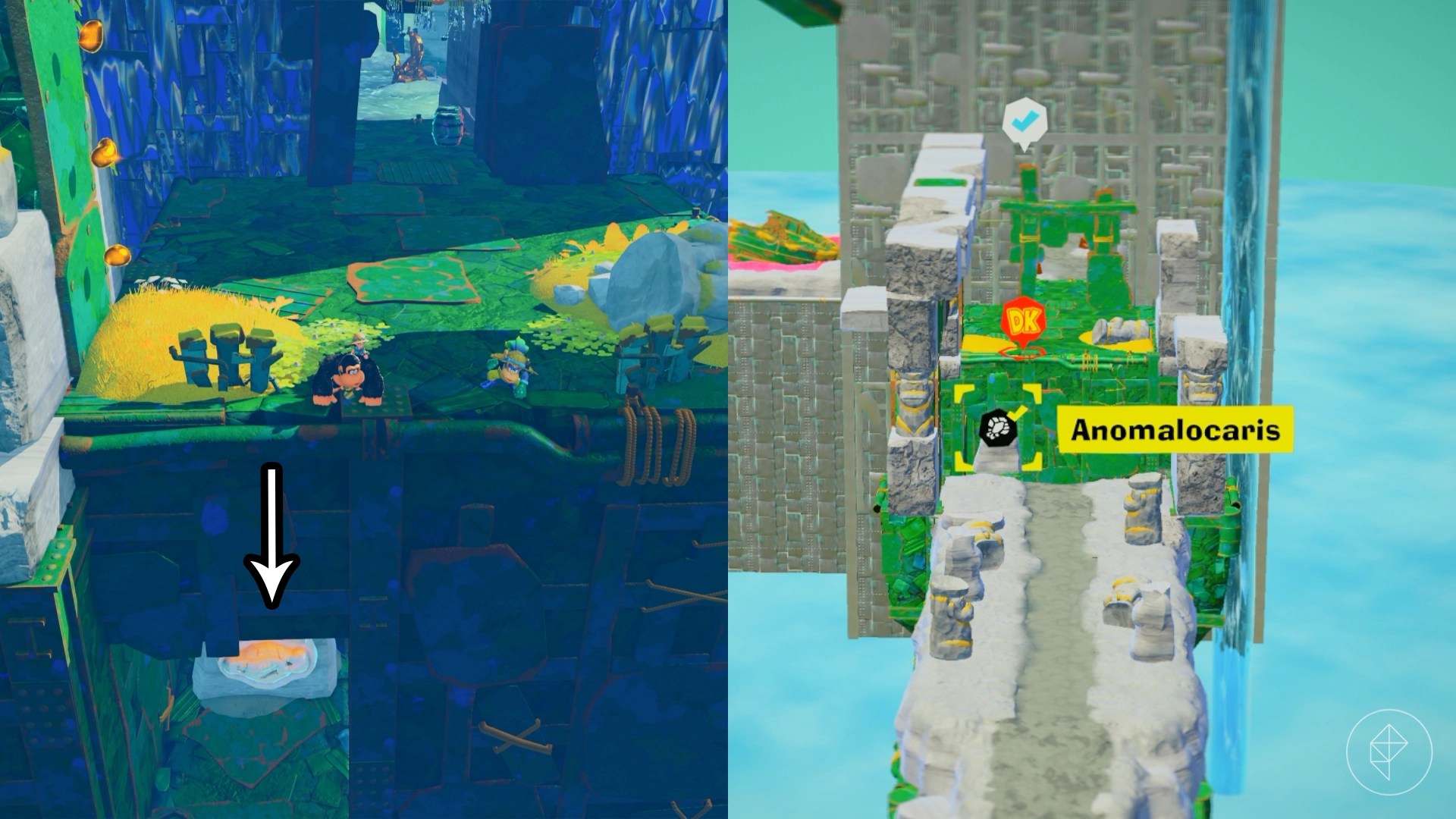
The last anomalocaris fossil can be found inside the bridge in Sublayer 102. Before you cross the bridge, climb down to find an opening in the wall, which contains the fossil.
Whale fossil location
The Whale fossil in Donkey Kong Bananza’s Lagoon Layer is the rarest fossil in this area. It is located on the outer part of Lagoon Layer (specifically on SL101), set on a small island below a large platform opposite the Warp Gong. This massive fossilized whale can be easily spotted from a distance due to its glowing orange hue. To collect it, players need to head northeast from where they first land in the Lagoon Layer, drop down via a rope pulley, then jump to the fossil site and break it out of the rocks. This fossil is highly valued as it is required for unlocking special outfits at Style Shops in the game.
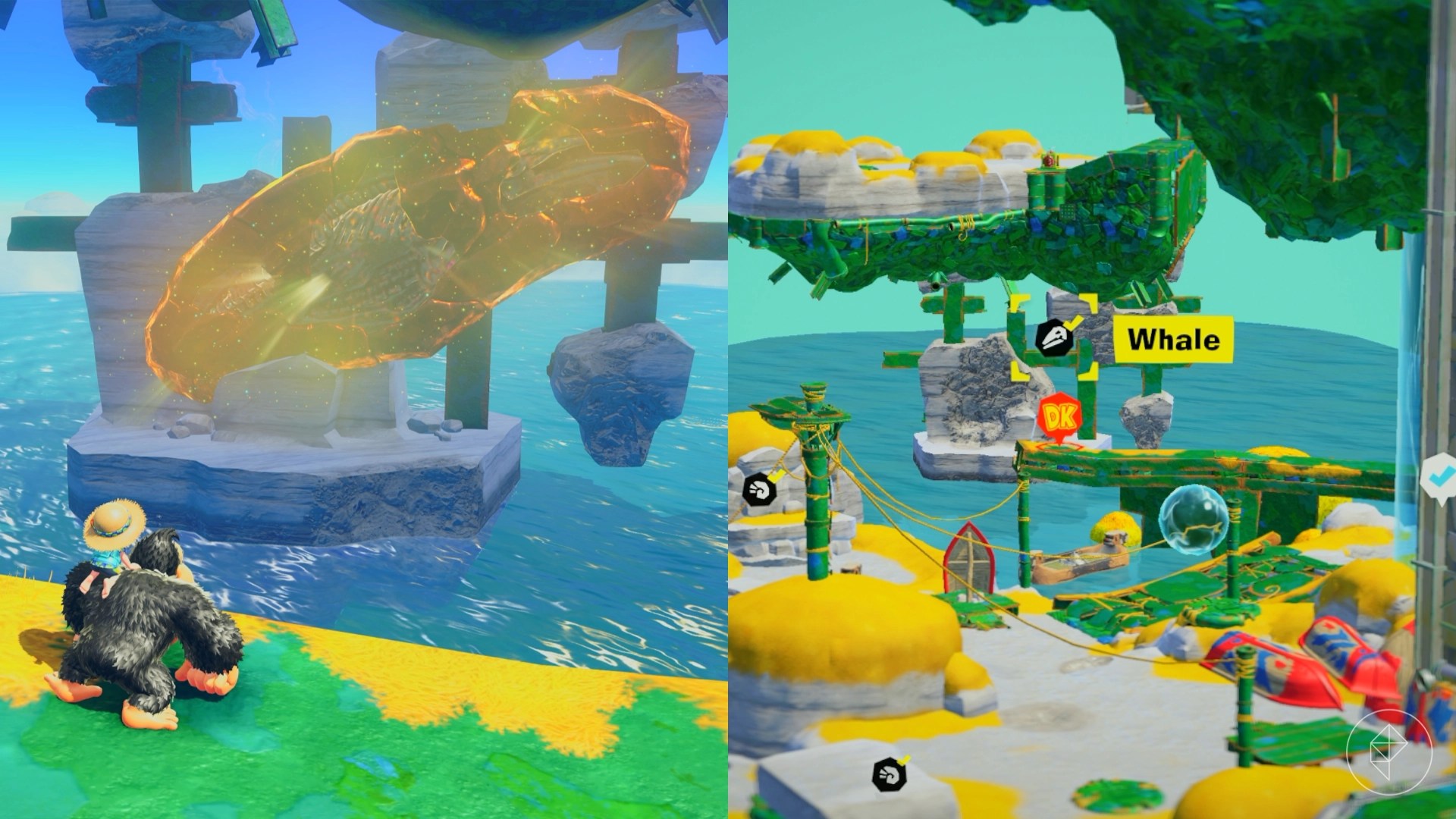
What makes the anomalocaris fossil more elusive in the Lagoon Layer
The anomalocaris fossil is considered more elusive in the Lagoon Layer primarily because it is much rarer and harder to access compared to other fossils like ammonites. Several factors contribute to its elusiveness:
-
Rarity and Placement: While there are numerous ammonite fossils scattered through easily accessible paths, there are only 10 anomalocaris fossils in the Lagoon Layer, and these are specifically described as being “much harder to come by” and “rare”.
-
Hidden Behind Environmental Puzzles: Many anomalocaris fossils are hidden behind concrete or destructible walls, as well as environmental puzzles that require special tools (such as the Boom Rock) to access. Players often must spot subtle environmental cues or thoroughly explore less obvious sections to even notice these hiding spots.
-
Progression Blocks: Some fossils become inaccessible due to environmental changes (such as raising water levels) if you haven’t collected them beforehand, forcing players to plan ahead or fully explore regions before making permanent changes.
-
No Direct Maps or Hints: Reports from players indicate that once maps stop dropping or merchants don’t offer them, it becomes much more difficult to discover the fossil locations, requiring more aimless searching and careful backtracking.
These combined elements-rarity, tricky hiding spots, dependence on environmental tools, and few navigational aids-make the anomalocaris fossil one of the most sought-after and elusive finds in the Lagoon Layer.
Why are anomalocaris fossils harder to spot in watery environments
Anomalocaris fossils are harder to spot in watery environments primarily due to the nature of their preservation, their body structure, and the visual challenges presented by aquatic sediment.
Key reasons include:
-
Soft-Bodied Preservation: Anomalocaris was a soft-bodied animal except for certain harder parts, such as mouthparts and frontal appendages. Soft tissues decompose rapidly and are rarely preserved unless special conditions-like rapid burial in fine mud under low-oxygen conditions-occur. These conditions are less common in dynamic, watery settings, making complete fossils rare and fragmentary.
-
Camouflage and Environment: In life, Anomalocaris likely inhabited open water and muddy seafloors, which would make their remains harder to distinguish from surrounding sediment layers after fossilization. The fine sediment of marine environments often obscures or distorts fossils, especially those lacking clearly defined hard parts.
-
Fossil Detection Challenges: Their fossils are not only less likely to survive but are also harder to recognize in the rock due to their segmented, flexible body plan and less obvious diagnostic features compared to hard-shelled animals like trilobites or ammonites. This often means only the mouth parts or claws are found intact, making identification less straightforward.
-
Exceptional Sites Required: Most well-preserved Anomalocaris fossils come from “Lagerstätten”-rare deposits like the Burgess Shale-which represent exceptional circumstances where rapid burial preserved soft-bodied creatures; such sites are few and far between.
In summary, the combination of soft tissues prone to decay, aquatic environments that readily obscure or scatter remains, and anatomical features that blend into sediment, all make Anomalocaris fossils significantly more elusive in watery fossil beds.
